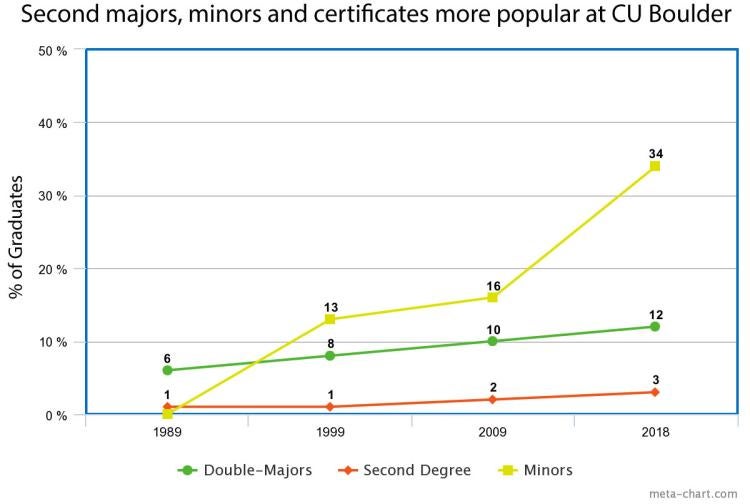Growing numbers of students are combining theory and practice, education and vocation in a systematic way
Either/or choices are simple—too simple: Bach or rock? Beaches or mountains? Art or science? In higher education, the purported choice is this: job training or broad education?

James W.C. White
These are false choices.
Life is not confined to binary options. Humans have nuance and breadth. Those who feel their spirits soar when listening to a Beethoven symphony can also sing along shamelessly in the car to Hey Jude. And students who quote Shakespeare can also crush their computer code.
Both intellectual breadth and practical applicability are built into the liberal-arts education our students enjoy at the College of Arts and Sciences. A liberal-arts education is both practical and broad—an avenue to satisfying incomes and fuller lives.
Growing numbers of students are combining theory and practice, education and vocation in a systematic way. These students major in two or more fields, earn degrees in two fields, or pursue a degree and minor—or earn a degree, minor and certificate. (See the differences explained at this link.)
Daria Nicke is one of those students. She is about to graduate from CU Boulder with a triple major in neuroscience, international affairs and economics, with minors in political science and Spanish. Nicke is on a pre-med pathway and plans to enroll in paramedic school next year, later going to medical school to become a physician.
Nicke and other students have discussed their academic choices with us recently, and you can read their stories at this link.
 Of course, Nicke could go to medical school studying only neuroscience, without intensively studying international affairs, economics, political science and Spanish. She explains what each extra major and minor gives her:
Of course, Nicke could go to medical school studying only neuroscience, without intensively studying international affairs, economics, political science and Spanish. She explains what each extra major and minor gives her:
- International affairs help her relate to a broad range of people, which will improve her “bedside manner.”
- Political science helps to hone her critical-thinking skills.
- Economics helps her understand the complexities of the health-care system.
- Spanish will be useful when she practices medicine in foreign lands.
Most students don’t have such a smorgasbord of majors and minors. But many employ similar strategic planning for a broad education that fuses passion and practicality. Examples: English major and business minor. History and computer science. Geography and dance.
In increasing numbers in the College of Arts and Sciences, students have been customizing their courses of study.
Since 1989, the percentage of students earning second bachelor’s degrees has stayed roughly constant at around 2%. But during that time, the portion of students pursuing two majors doubled, from 6% to 12%. The number of students pursuing minors soared from zero in 1989 to 34% last year.
2. To advance the university’s strategic priorities: CU Boulder’s Academic Futures Committee has emphasized the importance of the liberal arts to our students’ career success and to the health of our democracy.
3. To support our core mission: The liberal arts are at the heart of a comprehensive research university.
—James W.C. White
Similarly, the number of career-relevant certificates has soared along with the number of students earning those certificates. In 2008, the college offered 12 certificates; this year, there are 24 in a wide range that include actuarial studies, public health and the foundations of Western civilization.
As I’ve said previously, a liberal-arts education fosters critical-thinking and writing skills, as well as perseverance and self-discipline, talents and traits that employers seek and are willing to pay for. And now, more than ever, students are able to craft the depth and breadth of their liberal-arts education to reflect their passions and goals. This makes them even more marketable and adaptable.
Dinesh Paliwal, CEO of Harman International Industries, framed that flexibility this way:
“A degree in liberal arts has long been considered the most adaptable, with humanitarian and societal studies that prepare graduates to enter a wide variety of careers.”
Those careers include those that already exist and those not even yet conceived. Liberal-arts students, perhaps especially those who have further broadened and deepened their studies, will be ready for all challenges, known and unknown, that lie ahead. By avoiding a false choice, they choose to succeed.
James W.C. White is interim dean of the College of Arts and Sciences.



